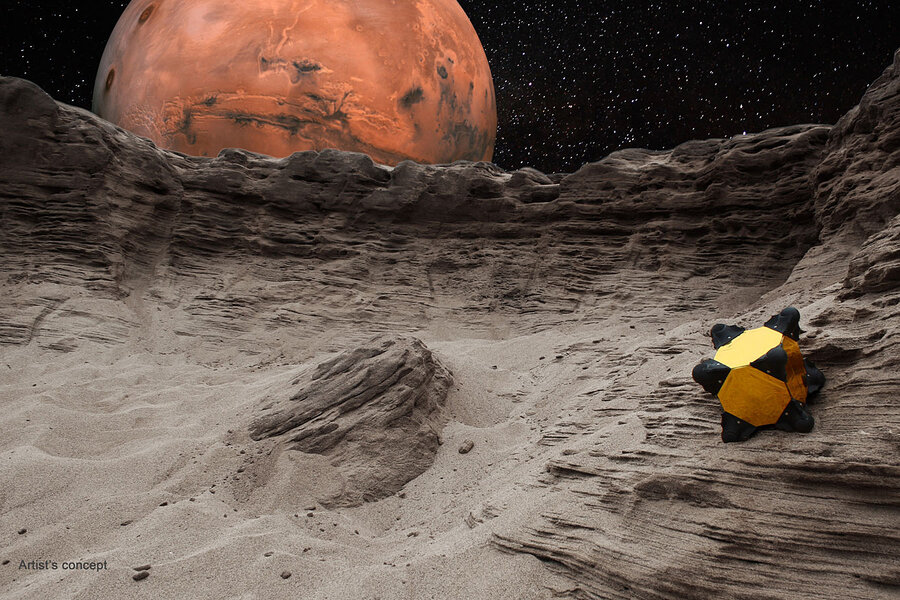NASA's latest baby: Hedgehog robot to hop around asteroids
Loading...
As space exploration widens, NASA researchers are developing a robot that can land on micro-gravitational bodies in order to allow for further study of asteroids and comets.
Nicknamed “Hedgehog,” the cube-shaped robot is designed for objects with low gravitational pull. Asteroids and comets have almost no measurable gravity, so existing spacecraft can experience difficulties when trying to land on the surface, as the European Space Agency's Philae lander discovered last year.
“Hedgehog is a different kind of robot that would hop and tumble on the surface instead of rolling on wheels,” Issa Nesnas, NASA team leader said in a news release. “It can operate no matter which side it lands on.”
Scientists at NASA's Jet Propulsion Lab, Stanford University, and MIT have developed two prototypes so far, both with a system of programmable spinning and braking flywheels, reports Nature World Report. The JPL prototype has eight spikes and uses disc brakes, while the Stanford prototype has smaller spikes and uses friction belts that stop the flywheels "abruptly," explains NASA.
The braking systems can also control how the Hedgehog hops from place to place.
"By controlling how you brake the flywheels, you can adjust Hedgehog's hopping angle. The idea was to test the two braking systems and understand their advantages and disadvantages," said Marco Pavone, leader of the Stanford team, who originally proposed Hedgehog with Dr. Nesnas in 2011.
The Hedgehog's spikes serve double duty, as feet for hopping and as probes to spear samples of dust and other material.
"The geometry of the Hedgehog spikes has a great influence on its hopping trajectory. We have experimented with several spike configurations and found that a cube shape provides the best hopping performance," says Benjamin Hockman, lead project engineer at Stanford. "The cube structure is also easier to manufacture and package within a spacecraft."
Overall, this “hopping” design is superior to a wheeled robot like the Mars Rover for a low-gravity surface, where "the slightest turn of their wheels could give them enough inertia to leave the surface and flip upside down," says Discovery News. The cube shape allows the robot to function no matter which direction it’s facing. The robot can even maneuver itself out of a crater or hole with a “tornado” technique in which the robot spins so quickly it lifts off the surface.
The prototypes are still in development and not yet fully autonomous, but they have been flown on several parabolic flights. NASA reports that Hedgehogs are more cost-effective than rovers, making it highly possible that successful asteroid landings are in the near future.







